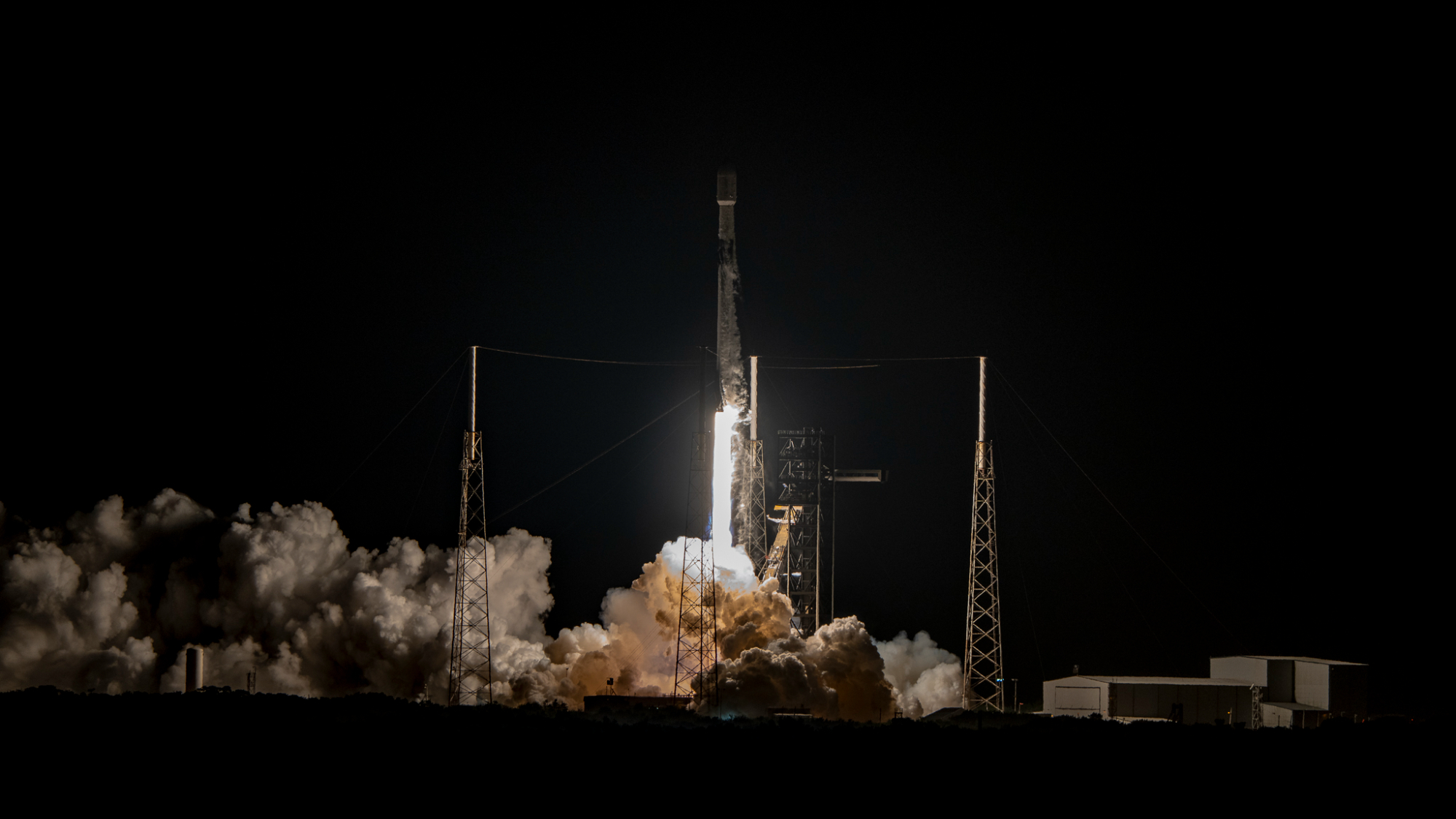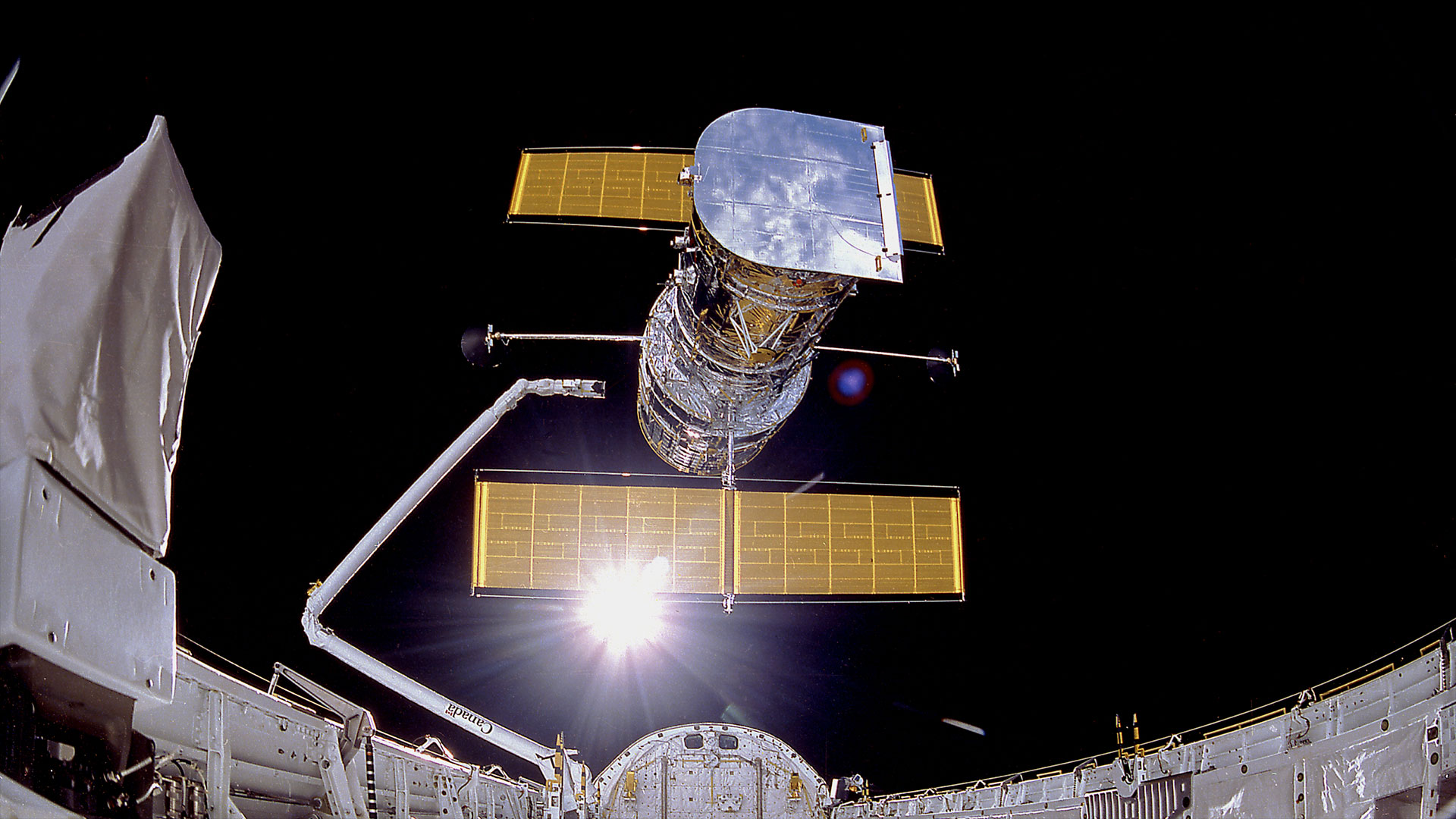'Sideways' Alien Earths May Still Be Able to Support Life

An Earth-size waterworld tilted on its side may still be able to support life, if the oceans aren't too shallow, a new study suggests.
As long as the entire world is covered in oceans at least 165 feet (50 meters) deep, temperatures would be moderate enough at the poles to support life. Even at the equator, which would be the chilliest part of that world since it only would receive a bit of sunlight in spring and fall, life could still exist.
But if you were to shrink the ocean's depth to something like 66 feet (20 m), then the risk of a runaway cold effect becomes much greater. Should a thin veneer of ice develop in the ocean, it's possible the climate system would collapse into an ice block in just a few hundred years. That short timeline would make it tough for life to develop a foothold, scientists say. [10 Exoplanets That Could Host Alien Life]
"That's a bad outcome for life," said lead author David Ferreira, who was with the Massachusetts Institute of Technology when the study was conducted. "With deeper oceans, a collapse into a global snowball is possible, but a bit harder. It feeds into the idea that if you have an extensive, big, deep ocean, your chances to find life or a climate that is habitable are higher."
Ferreira's paper, titled "Climate at high-obliquity," was published in the journal Icarus in November. It forms part of his greater research interest in the role of oceans on climate. That research interest led Ferreira to the United Kingdom's University of Reading, where he is a lecturer (professor) in the department of meteorology.
Hot poles, cold equator
The traditional view of "habitable" planets came from looking at those that are in the "Goldilocks zone" of their parent stars. This is the region where water can exist above the freezing point, but it's not so hot that the water begins to boil away.
Get the Space.com Newsletter
Breaking space news, the latest updates on rocket launches, skywatching events and more!
The conditions for life, however, are more complicated than that. For example, if the planet is too large, the pressure of the gas will likely make it too tough for life to survive. If the planet is too small, its gravity could be too low to hold on to an atmosphere. Therefore, many researchers say habitable planets in the Goldilocks zone must be close to Earth's size.

Other factors can also come into play, such as the presence or absence of an ocean. As those who live in coastal California or the south of Italy know, the proximity of water can make temperatures over nearby land much more steady and mild. On a planet-size scale, a global ocean would also do this trick as long as it is deep enough, the research reveals.
For simplicity's sake, the simulation assumed an Earth-size planet orbiting a sunlike star at the same distance our planet does (93 million miles, or 150 million kilometers). The researchers, however, changed two major parameters. [The Search for Another Earth (Video)]
The first was the planet's tilt. Earth's axis is tilted at 23.5 degrees, which makes enough of a difference across the planet to produce the seasons. The simulation instead made the tilt 90 degrees so that the planet was spinning on its side.
The second variable was the presence of oceans. While the Earth is covered in oceans by about 70 percent, the simulation assumed 100 percent cover with different depths, ranging from 33 feet (10 m) to about 9,840 feet (3,000 m). It was the threshold of 165 feet (50 m) that interested researchers the most, as this was considered a minimum depth to have a stable climate suitable for life.
The poles would seem to be the toughest place to live on this theoretical world. During the summer, they would face the sun directly, while in the winter they would face away. But even in the coldest part of the year, the surface temperature in those zones would be no less than 50 to 59 degrees Fahrenheit (10 to 15 degrees Celsius), the study found.
"It's a bit like the Earth's Arctic in the summer," Ferreira said.
The summer, by contrast, would see temperatures soar to 95 to 104 degrees F (35 to 40 degrees C).. That's hot, but by no means hot enough to discourage life from surviving. Meanwhile, the equators would be the coldest parts of the planet, but would remain above freezing, at 36 to 39 degees F (2 to 4 degrees C).
"Even there, those are not harsh conditions. Liquid water would survive there," Ferreira pointed out.
While waves were not simulated on this water world — they're too small for the scale of the simulation — the study did examine the role of thermal currents. The researchers found similar current systems to Earth’s, which are driven by temperature differences in the ocean and atmospheric winds. There is, for example, a well-known circulation pattern on Earth that brings water from the Southern Hemisphere to the North Atlantic.
"It's typical of what people would do with climate simulations for future global warming. It's on this level of complexity," Ferreira said. [8 Ways Global Warming Is Already Changing the World]
Mapping for future planet-hunters
There are other kinds of worlds where habitability could be possible, in the case of a global ocean. Other systems ripe for consideration include "super-Earths" — those planets that are slightly larger than our own — and "mini-Neptunes," or planets that are a bit smaller than the gas-swaddled planet in the outer solar system.

What the researchers are considering next, however, is a "tidally locked" planet. This is a planet that perpetually has one side facing its star, and another facing away. This kind of configuration is common in our own solar system. Earth's moon is tidally locked to our planet. Jupiter and Saturn also have small moons (relative to the gas giants' size) that keep one side facing the planet.
It's too early to make predictions as to how habitable those worlds could be, but Ferreira said if habitability is possible, this increases researchers' chances of finding life beyond the solar system. Tidally locked worlds are actually among the easiest kinds of exoplanets for researchers to find. This is because of the methods astronomers use to seek out new worlds. One of them relies on measuring the gravitational "wobble" a planet produces on its parent star. If the planet is closer to its star, it will have a stronger pull, which makes it easier to detect.
Another method looks for the disc of a planet passing across its star's face. Planets with close-in orbits would make those crossings more frequently than planets that don't, which again increases the odds of their being detected with current technology.
Earth-sized worlds, however, are hard to find due to their tiny size. That said, NASA's Kepler space telescope has detected at least two in the habitable regions of their parent stars. Future telescopes could make the search easier, since they could be more sensitive to smaller planets. Upcoming planet-hunters include NASA's James Webb Space Telescope (slated for launch in 2018), and a European mission called PLATO (PLAnetary Transits and Oscillations of stars), which would launch in 2024.
Ferreira's research, however, will continue in the direction of oceans on newfound worlds.
"Oceans on the Earth are the big regulator of the climate system," he said. "Naturally, the question is how you would apply that knowledge to the planets that are in a different astronomical state than Earth. One would expect oceans in such planets would be a strong regulator on the climate as well, and a factor in habitability."
This story was provided by Astrobiology Magazine, a web-based publication sponsored by the NASA astrobiology program. Follow Space.com @Spacedotcom, Facebook and Google+.
Join our Space Forums to keep talking space on the latest missions, night sky and more! And if you have a news tip, correction or comment, let us know at: community@space.com.

Elizabeth Howell (she/her), Ph.D., was a staff writer in the spaceflight channel between 2022 and 2024 specializing in Canadian space news. She was contributing writer for Space.com for 10 years from 2012 to 2024. Elizabeth's reporting includes multiple exclusives with the White House, leading world coverage about a lost-and-found space tomato on the International Space Station, witnessing five human spaceflight launches on two continents, flying parabolic, working inside a spacesuit, and participating in a simulated Mars mission. Her latest book, "Why Am I Taller?" (ECW Press, 2022) is co-written with astronaut Dave Williams.










